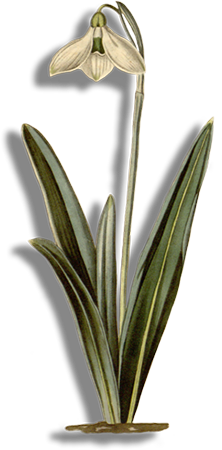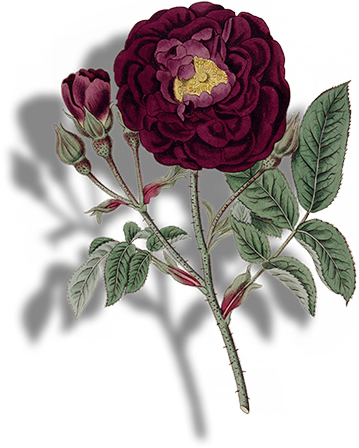| Part I: The Economy of Vegetation | Part II: The Loves of the Plants |
|---|---|
| Frontispiece | Frontispiece |
| Advertisement | Preface |
| Apology | Proem |
| Argument Summaries | Cantos I—IV (with Interludes) |
| Cantos I—IV | Additional Notes |
| Contents of the Notes | Catalogue of the Poetic Exhibition |
| Additional Notes | Contents of the Notes |
| Contents of the Additional Notes | Index of the Names of the Plants |
| Illustrations in passim | Illustrations in passim |
| Theme | Species |
|---|---|
| Philosophy & Science | Canna indica, Dodecatheon meadia, Drosera rotundifolia, Cibotium barometz, Mimosa pudica, Selenicereus grandiflorus |
| Medicine | Cinchona officinalis, Cassia fistula |
| Sex & Gender | Canna indica, Mimosa pudica, Adonis annua |
| Politics | Canna indica, Cinchona officinalis, Cassia fistula |
| Art & Culture | Dodecatheon meadia, Drosera rotundifolia, Cibotium barometz, Mimosa pudica, Selenicereus grandiflorus, Adonis annua |
| Colonialism | Canna indica, Dodecatheon meadia, Drosera rotundifolia, Cibotium barometz, Cinchona officinalis, Cassia fistula, Adonis annua |
Poetic Botany identifies an eighteenth-century movement in which botany became the subject of poetry.
The relationship between art and science cultivated during this movement resulted in a rich trove of botanical knowledge, sumptuously presented in books, artworks, and gardens.
This exhibition will introduce the poetic botanists who constituted this movement, the works they created, and the themes implicated in their works.
Above all, though, this exhibition will present nine of the most beautiful, curious, and sensational species living within those very pages.
Plants are the true protagonists here. They are what animates everything that follows.

“The first flower that appears on the verge of winter is the Snow-Drop, of a pale white, with a little green in the three central petals, whose form the poetess elegantly depicts.
Poets still in graceful numbers,
May the glowing Roses choose:
But the Snow-Drop’s simple beauty
Better suits an humble muse.
Earliest bud that decks the garden,
Fairest of the fragrant race
First-born child of vernal Flora,
Seeking mild thy lowly place.
Though no warm, or murmuring zephyr
Fan thy leaves with balmy wing:
Pleas’d, we hail thee, spotless blossom,
Herald of the infant spring.”
Poem by Cordelia Skeeles,
quoted in Robert John Thornton’s
Temple of Flora (1807)
Flowers have never been strangers to poems: from Wordsworth’s praise of daffodils to Ginsberg’s “Sunflower Sutra,” they have been a consistent subject, metaphor, and motif of poetry.
The rose, for instance, occurs in poems again and again, making one of its most famous appearances in Juliet’s plea to Romeo: “What’s in a name? that which we call a rose/ By any other name would smell as sweet.”
But Poetic Botany is different.
For one, the poetic botanists of the eighteenth century were unlike Juliet: they would have been deeply concerned with each plant’s name. For them, the name would have revealed the plant’s place in nature.
The rose, moreover, as beautiful as it may be, was not just something to be adored, but something, ultimately, to be known.
In the end, Poetic Botanists were devoted as much to the science of plants as to their poetry. They hoped that their works would have offered us a glimpse into the secrets of nature, and, in turn, offered some insight into ourselves.

“At every blast a cloud of odorous flowers,
Immortal Roses, which the smile divine,385
Of truth and constancy, had taught to blow:
Such, as o’er Psyche’s bridal couch, the Hours
Shed emulous, and made the ambrosial feast
Worthy of heaven.—But, by no magic spells
Enslaved, efficient in its native strength,390
The salutary herb shall oft renew
The healthier action of the feeble frame,
Astringent, cephalic, or febrifuge:
For this the scientific herbalist
Shall rear the Gallican, nature twine395
Her wilder blossoms through the straggling hedge.”
“395. The Gallican.—Rosa Gallica from being used in medicine, has commonly been called ‘The Apothecary's Rose.‘ ... In the Germ. Ephemer. there is an account of a man, who was so affected by the scent of Roses, that he could not go out during the season of their flowering.... In the same work is also an account of a woman killed by their odor.”
William Tighe
“The Rose” (1808)
Erasmus Darwin (1731—1802) was a doctor, inventor, scientist, philosopher, and poet.
In 1791, he published The Botanic Garden, a Poem in Two Parts and thereby inaugurated the Poetic Botany movement, which included authors like Frances Arabella Rowden, Charlotte Smith, and Robert John Thornton. Darwin’s book captured the public’s imagination enough to become a spectacular best-seller at the end of the eighteenth century. (Along with his other works, it would even go on to influence his grandson, the famous Charles Darwin, half a century later).
Although The Botanic Garden is a baroquely-structured book that treats almost every subject imaginable, a single striking feature of its composition abounds: on nearly every page, poetic verse stands atop scientific footnotes, the latter expatiating on the former.
Darwin did not invent this genre. But he did perfect it.
As a result, Darwin created a work wholly original in its time, and because this kind of polymathic work has been nearly impossible to write since, it remains just as original in our time as well.
Poetic Botany, as its name suggests, is mainly concerned with plants.
Therefore, this exhibition will provide a glimpse into how botany and related sciences were practiced in the late eighteenth century.
At the same time, though, this movement’s authors and their works also reveal other significant aspects of the period, even though it might not always be the intention of the author or work to do so. These aspects are collected here under the following six themes.
While plants may be the protagonists of this exhibition, their narratives reach beyond the strictly botanical. Their lives are inextricably bound up with ours—and our lives equally with theirs.